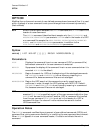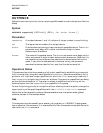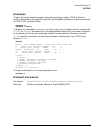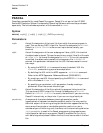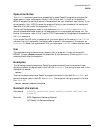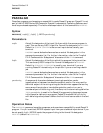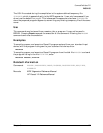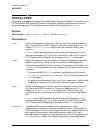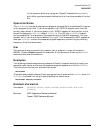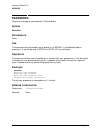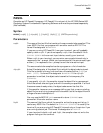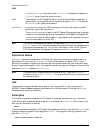
Chapter 6 415
Command Definitions P-R
PASCAL
Operation Notes
The PASCAL command compiles a compatibility mode Pascal/V program and stores the
object code in a user subprogram library (USL) file on disk. If textfile is not specified,
MPE/iX expects the source program to be entered from your standard input device. If you
do not specify listfile, MPE/iX sends the program listing to your standard list device and
identifies it by the formal file designator, PASLIST.
The formal file designators used in this command (PASTEXT, PASUSL, and PASLIST)
cannot be backreferenced as actual file designators in the command parameter list. For
further information, refer to the "Implicit FILE Commands for Subsystems" discussion of
the FILE command.
If you create the USL prior to compilation, you must specify a file code of USL or 1024. If
you omit the uslfile parameter, the object code is saved in the temporary file domain as
$OLDPASS. To keep it as a permanent file, you must save $OLDPASS under another name.
Use
This command may be issued from a session, job, or program. It may not be used in
BREAK. Pressing
Break suspends the execution of this command. Entering the RESUME
command continues the execution.
Examples
The following example compiles a Pascal/V program entered from the standard input
device and stores the object code in the USL file $OLDPASS. The listing is then sent to the
standard list device.
PASCAL
The next example compiles a Pascal/V program contained in the disk file PASCSRC, and
stores the object code in the USL file PASCOBJ. The program listing is stored in the disk
file LISTFILE.
PASCAL PASCSRC,PASCOBJ,LISTFILE
Related Information
Commands PASCALGO, PASCALPREP, PASXL, PASXLGO, PASXLLK PREP, RUN, LINK,
LINKEDIT
Manuals MPE Segmenter Reference Manual
HP Pascal/iX Reference Manual




